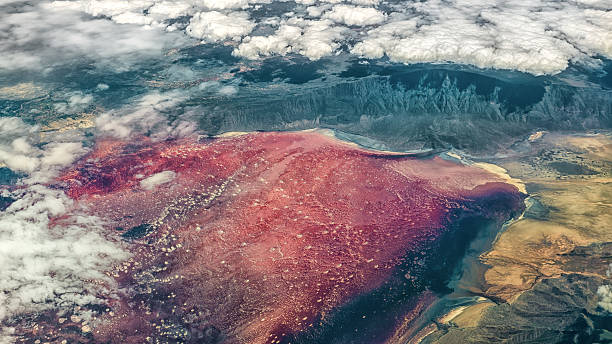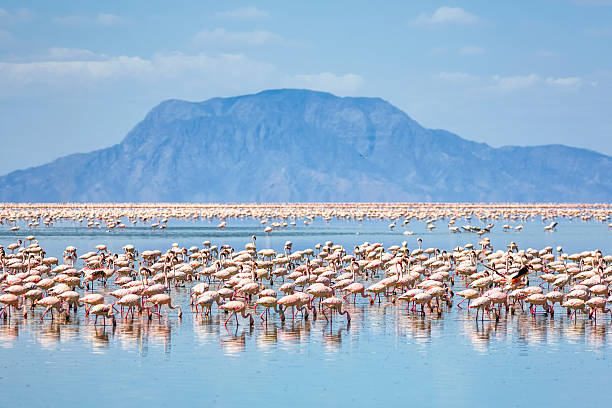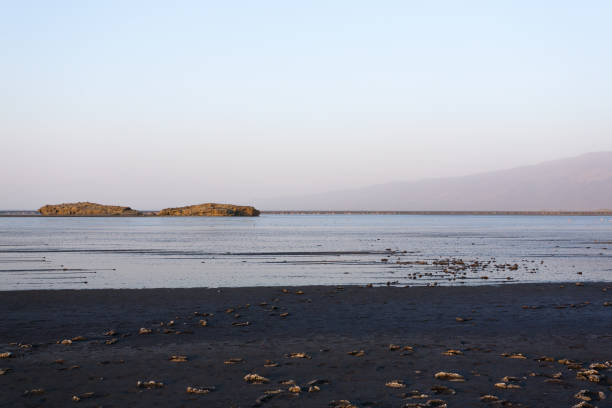Lake Natron: The Mesmerizing Water That Transforms Creatures into Stone from Tanzanian
Lake Natron, a captivating body of water nestled in northern Tanzania, has entranced the world with its extraordinary phenomenon. The waters of Lake Natron possess a unique power that turns animals into stone-like structures, forever frozen in time. This awe-inspiring spectacle is surrounded by petrified remains of numerous creatures, resembling intricate stone sculptures. The journey to decipher this remarkable occurrence takes us through the high alkalinity and distinct mineral composition of Lake Natron’s waters.

The Alkaline Enigma:
Situated in the Arusha region of Tanzania, Lake Natron is renowned for its elevated alkalinity, boasting a pH level of approximately 10.5. The lake’s high alkalinity is attributed to its abundance of sodium carbonate and a variety of other minerals. These properties contribute to the lake’s reputation as a site of metamorphosis, where animals immersed in its waters undergo a process known as calcification, transforming them into enduring stone-like structures.
The Process Unveiled:
The interaction between the alkaline water of Lake Natron and the minerals it holds triggers a scientific process that leads to the calcification of animals’ bodies. The introduction of alkaline and mineral-rich elements from streams flowing down nearby hills creates a unique ecosystem. Creatures venturing into this water experience the transformative effects of these properties. The combination of sodium carbonate, minerals, and the reflective nature of the lake gives rise to the illusion of petrified sculptures, preserving the creatures’ remains for extended periods.

Image credit istockphoto
Similar Mysteries Across Africa:
Lake Natron’s enigma resonates with other enigmatic lakes across Africa. Kivu Lake in Congo, known as the “Exploding Lake,” harbors carbon dioxide and methane gases with potential dangers for nearby life forms. In the United States, Lake Michigan’s beauty conceals a hidden danger—lethal gas clouds that were once life-threatening. These tales underscore the intricate interplay between geological and chemical factors in shaping the planet’s natural wonders.
Unveiling Nature’s Secrets:
The mysteries of Lake Natron and similar phenomena underscore the astonishing marvels of our planet. Nature, governed by scientific principles, holds within it the secrets of transformative processes. The geological and chemical traits of environments like Lake Natron give birth to phenomena that simultaneously inspire and educate us, granting insight into Earth’s delicate equilibrium.
Preservation through Alkalinity:
The alkaline water in Lake Natron, with a pH as high as 10.5, is so caustic that it can harm animals not adapted to it. The water’s alkalinity stems from sodium carbonate and other minerals flowing from surrounding hills. These deposits, reminiscent of substances once used in Egyptian mummification, act as a remarkable preservative for creatures that meet their fate in the lake’s waters.
Thriving Ecosystem Amid Alkalinity:
Contrary to some media reports, animals that encounter Lake Natron’s alkaline waters do not merely turn to stone and perish. The lake’s waters support a thriving ecosystem, including salt marshes, freshwater wetlands, flamingos, wetland birds, tilapia, and algae that sustain large flocks of flamingos. Photographer Nick Brandt’s haunting images from “Across the Ravaged Land” capture this ecosystem in its unique beauty.

Lake Natron’s Serenity and Threats:
Lake Natron stands as a serene oasis in Africa, yet it faces threats to its tranquility. A proposed hydroelectric power plant on the Ewaso Ngiro River, the lake’s main water source, endangers both its serenity and the population of flamingos that rely on it. Despite its isolation (not discovered by Europeans until 1954), there are no safeguards in place for the lake and its imperiled flamingo inhabitants.

Conclusion:
Lake Natron’s mysteries exemplify the hidden marvels our world conceals. Its extraordinary waters orchestrate the transformation of ordinary animals into timeless stone-like structures. This captivating phenomenon not only fuels our imagination but also imparts lessons about the potent forces that shape our natural realm. As we delve into these enigmas, we cultivate a deeper reverence for the intricacy and splendor that define the landscapes of our Earth. https://twitter.com/mattgaetz/status/1701043848577724588?s=19 https://gamingpur.com/india-vs-australia-odi-series-inds-victory-in-the-1s/





